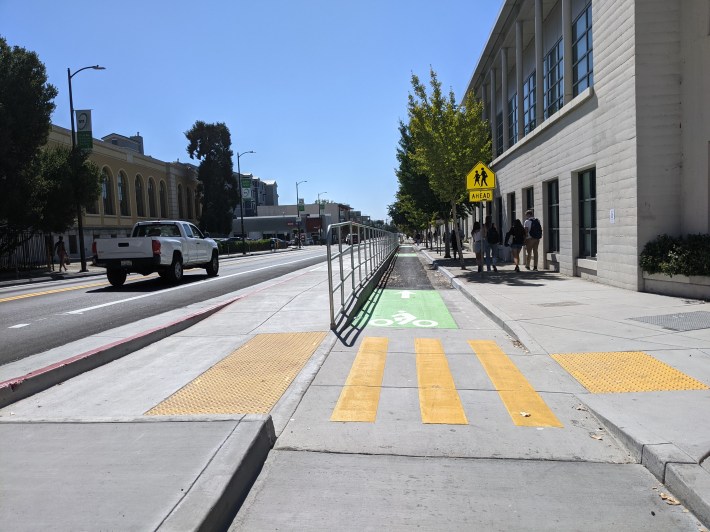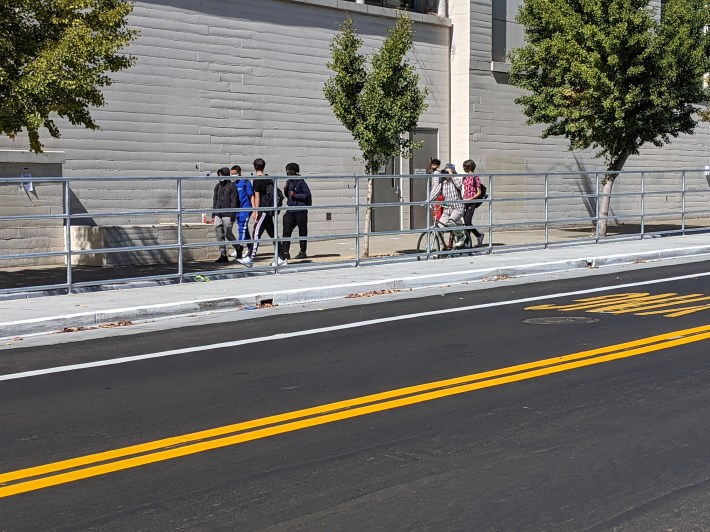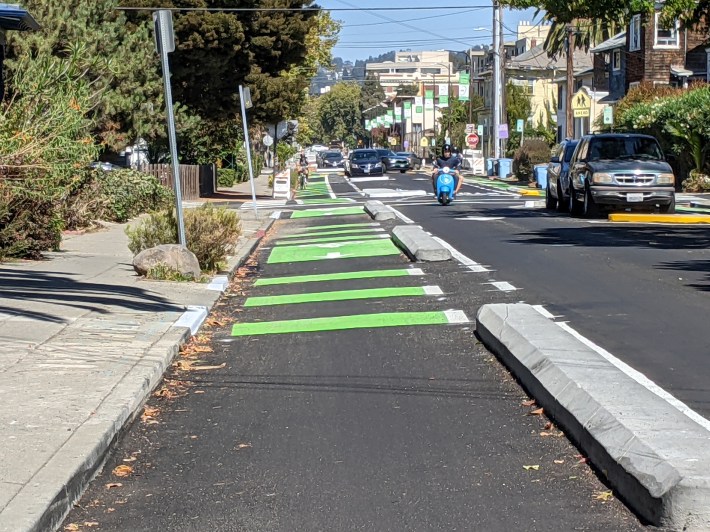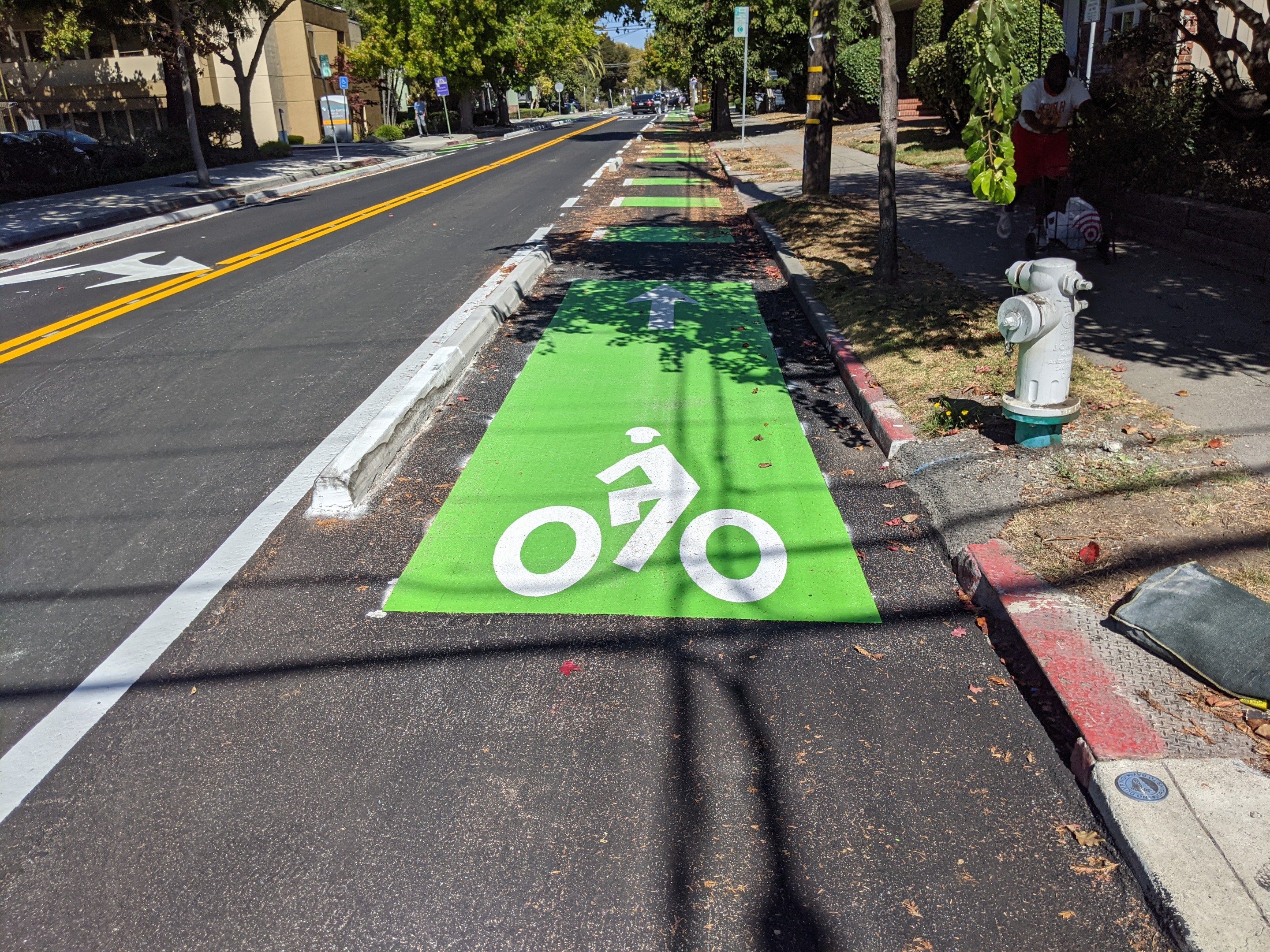A substantial portion of a project to improve Milvia Street in Berkeley, from Blake to Hearst, is now complete. Concrete-curb and parking-protected bike lanes, vehicle lane reductions, and intersection treatments are in place from Blake to Allston Way.
Streetsblog took a ride on it this morning and couldn't put it better than Bike East Bay's Dave Campbell below: "be still my beating heart."
Still my beating heart 💓 #Milvia 3/3 pic.twitter.com/pqYQ7n52vl
— Dave Campbell (@Derailluer) September 30, 2021
Since having protected bike lanes on both sides took two lanes away from cars, the project reduced sections of Milvia to one-way, which, as Campbell told Streetsblog, is a relatively unusual solution to the "where will people park" complaint against creating protected space for bikes. That's encouraging in Streetsblog's view: when outreach is conducted, neighbors should be able to choose between losing traffic lanes or losing parking. Forgoing protected bike lanes and allowing cyclists to continue to get mashed (Milvia is a high-injury corridor) should not be on the table.

Berkeley's planners also "took inspiration from Valencia Street's school loading zone in San Francisco," explained Campbell, for the treatment it used in front of Berkeley High School as a way to prevent conflicts between cyclists and kids getting dropped off and picked up for school. Note the fence to prevent kids from wandering into the bike lane.

One hopes more high schoolers won't need to be dropped off in the first place once Berkeley's bicycle plans come to fruition. Other sections depend on parked cars or concrete curbs (see below) to make sure errant motorists don't drift into the bike lane.

Note there are plenty of driveways along Milvia, despite the constant rejoinder from engineers in other cities that driveways somehow make it impossible to install protected bike lanes.

Campbell stressed that the project is only about half completed. Crews still need to add vertical bollards to improve motorists' ability to see the concrete protection.

When completed at the start of next year, the project will provide protected lanes all the way to Hearst, which got a protected treatment in 2018.
What's in so far on Milvia is really encouraging--and shows what can be accomplished throughout the Bay Area when cities make a commitment to safety.






